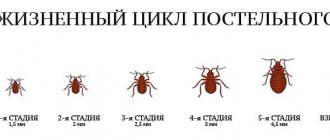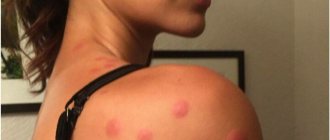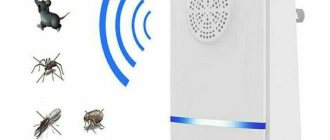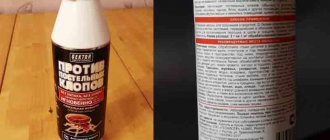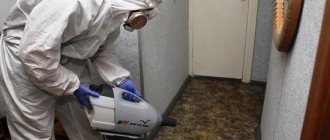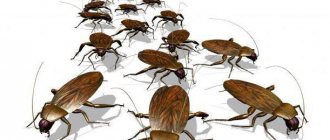Fighting bed bugs is a troublesome and far from simple matter. Therefore, it seems quite logical for a person to want to find natural enemies of the parasite - at least in order to resort to their help in destroying it. In nature, you can find many animals that include domestic bugs in their diet. A variety of insects readily eat the bed parasite; domestic and wild animals are less active. The food preferences of some of them in relation to bedbugs are discussed in detail in the article.
What insects eat bedbugs?
It is well known that insects are the largest class of invertebrate arthropods. As a result, it is not surprising that there is enmity between their various representatives, which often results in hunting and eating each other. Among the insects that actively eat house bugs, several should be highlighted:
- other representatives of this suborder. There is a serious struggle within bedbugs, and in this case we are talking about both one type of parasites that eat their fellows as enemies, and about different ones. Their number in nature is very large, although it is difficult to imagine a situation in which a person independently breeds some bugs in the house so that they eat others;
- flycatchers. They are natural enemies of bedbugs in nature. They are a species of centipedes belonging to the order Labiopods. The name eloquently demonstrates both the appearance of the insect and its diet. In addition to flies, flytraps actively destroy almost any domestic parasites, including bed bugs, ants, and cockroaches. They eat millipedes and beneficial insects, such as spiders. Therefore, if a flytrap is found in an apartment or house, you should not destroy it; it is much simpler and more correct to give the centipede the opportunity to do what it loves and help a person get rid of unwanted neighbors;
- carpet beetles. They are small in size, and therefore are unlikely to be able to cope with an adult bedbug. At the same time, being omnivores, they readily attack the larvae and eggs of the parasite, which are unable to fight back. Therefore, carpet beetles in general can be very useful in the fight against domestic bedbugs, being their natural enemies in nature.
All of the above types of insects can hardly be called frequently found in human homes. Therefore, it is advisable to consider in more detail the usual menu of the main inhabitants of houses and apartments from the world of insects - cockroaches, ants and spiders.
About bed bugs
Bed bugs settle in close proximity to humans.
Insects feed exclusively on blood. Even the female will not begin to lay eggs until she has drunk enough of this “life-giving moisture.” An adult consumes up to 7 ml of human blood, which is twice its own weight. The process of reproduction of bloodsuckers can occur at any time of the year. Life expectancy on average is about 1.5 years. Excessively low (-17 degrees) and high temperatures (+45 degrees) are harmful to insects.
Bed bugs - their larvae and eggs
Interesting!
The night image is the only similarity between bedbugs and cockroaches. “Hunting” for both takes place mainly at night. Only severe hunger can force a bloodsucker to crawl into the light.
The presence of bloodsuckers in the house can be determined not only by bites on the body, but also by characteristic signs: a specific smell, as well as dried blood stains on the bed.
Do cockroaches eat bed bugs and their eggs?
Having discovered yet another unpleasant neighbor in his home, the owner of a house or apartment often wonders: is it true that cockroaches eat bedbugs? The answer is quite simple. Yes, cockroaches eat bedbugs and their eggs, acting as their direct natural enemies. In general, it is much easier to say what is not included in their diet, since this representative of insects is almost omnivorous.
It is important to note that cockroaches eat bedbugs in their various forms - eggs, larvae, adults, and even waste products of parasites. Moreover, in this case we are talking about almost any domestic cockroaches - Prussian (red), black or American.
But it should be remembered that they are primarily interested in the chitinous coverings remaining from the larvae and eggs. Cockroaches very rarely attack larvae and adult bedbugs themselves, preferring more nutritious food. Therefore, they have little effect on the population size of the domestic parasite, being unreliable allies in the fight against it. Moreover, they themselves are an unpleasant neighbor in an apartment or house and a clear enemy of man in nature.
About cockroaches
Cockroaches, or as they are also called red-haired Prussians, would seem to be less safe for humans, causing many people a feeling of disgust and disgust. However, their waste products can cause a severe allergic reaction in humans.
For the favorable existence of mustachioed pests, three important factors are necessary - water, food and warmth. Insects find all these conditions in the kitchen, preferring to settle in various secluded places, crevices and cracks. Prussians leave their shelters in the dark so as not to become a human victim.
Making sure that cockroaches have appeared in the house is quite simple - you just need to turn on the light in the kitchen or bathroom at night. Traces of the presence of pests can also be revealed by excrement left behind and chitinous coverings shed during molting.
Cockroaches in the house
Do ants eat bedbugs in apartments?
The question of whether ants eat bedbugs must be answered in the affirmative. But, as in the case of cockroaches, you need to consider the following. Ants eat bedbugs primarily in the form of eggs, rarely attacking the larvae and adults of the domestic parasite. Although the poison contained in the saliva of ants is quite capable of killing a bug, as well as most of their enemies from the insect world.
When considering the question posed in the title of the section, it is necessary to remember about the different lifestyles of ants and bedbugs. Although insects are enemies in nature, they simply rarely cross paths in life. They differ - and very much - in almost everything, from their favorite habitats to their active time of day.
From all that has been said, an obvious conclusion follows. In general, ants are reluctant to act against bedbugs, so you should not seriously count on them in the fight against a domestic parasite. However, this type of insect is a natural enemy of the house bug, which still makes sense to take into account.
Do-it-yourself baiting of bedbugs and cockroaches
Independent baiting of bedbugs and cockroaches can be carried out using pest control agents or folk remedies. If you want to get rid of parasites quickly and there are a lot of them, it is more advisable to immediately move on to radical solutions and use insecticides.
Folk remedies for cockroaches and bedbugs
There is no universal, more or less safe and at the same time likely to be effective folk remedy for bedbugs and cockroaches; you need to use your own method against each species.
From bedbugs
It is impossible to completely eliminate bedbugs using folk remedies, but some measures are suitable for local pest control.
- Freezing individual items in the freezer compartment of a refrigerator at -15°C for at least 5 days can kill larvae and pests.
- Small pieces of furniture, such as chairs, can be washed with hot (60°C and above) water and 72% laundry soap.
- You can use a steamer to process things, after which you need to wash them.
Before any temperature exposure, make sure that it will be safe for the fabric or material of the item/item.
From cockroaches
The most effective folk remedy for cockroaches is bait with boric acid. Required:
- Boric acid powder.
- Food bait - potato pulp, banana pulp, eggs, jam, etc.
The acid powder should be mixed until smooth in a 1/1 ratio and placed in the form of small drops or pieces on substrates in secluded places where you often see cockroaches.
Carefully!
Boric acid is dangerous. Do not use it near food or place mats in the open where small children and pets can reach them.
Special remedy for cockroaches and bedbugs
Ready-to-use products can be narrow-profile - intended only for fighting cockroaches or only for baiting bedbugs, or universal and affect both parasites at once. Preparations that can poison both pests at once can be in the form of aerosols, sprays or concentrates.
| Aerosols/Sprays | Concentrates |
| Raid Lavender | K-Otrin WG 25 |
| Combat MultiSpray | Agran |
| Raptor 17 types of insects | Bug beetle |
| Dr. Klaus universal insect repellent | Medilis Cyper |
| Delicia Contra Insect Universal | GET Total |
These products are given here as an example; the choice in retail stores and online is actually much wider; you can easily choose a drug that suits you in terms of volume and price. Aerosols and sprays are completely ready for use. Concentrates require manual mixing in the correct proportions, as well as a good sprayer that will provide a fairly fine droplet size.
Do spiders eat house bugs?
When considering whether spiders eat bedbugs, it is also necessary to take into account the lifestyle and favorite habitats of this type of predatory insect. Blood-feeding domestic parasites prefer to settle closer to human sleeping places. Spiders, in turn, do not at all strive to contact the owner of the home; on the contrary, they choose secluded corners formed by walls, ceilings and furnishings located in the premises to weave webs.
It’s good if the lower part of the bed, sofa or chair becomes such a corner - in this case, the likelihood of a bed bug getting into a spider’s web increases sharply. As for food preferences, spiders eat house bugs and very willingly. In general, the diet of this natural enemy of arthropods contains almost all insects, including parasites that are unpleasant to humans, starting with the already mentioned cockroaches and flies, and ending with ants and bedbugs.
All of the above makes the spider probably the most useful representative of the insect class that lives in a person’s apartment or house. Although it is unlikely to be used specifically against house bugs for the reasons described above.
Lifestyle of bedbugs
These parasites are no less disgusting than cockroaches, but much more bloodthirsty. Blood is the only irreplaceable food for them. The female will not begin laying eggs until she has drunk plenty of fresh blood.
Bloodsuckers breed all year round and in warm conditions. At t -17 °C they die within a day. Intense heat also brings death to them: at t +45 °C and above, the death of bedbugs occurs within an hour.
It is logical that these parasites have always been fought by freezing, leaving the hut open for two days in severe frosts.
The lifespan of bed bugs is up to one and a half years. An adult insect can suck about 7 ml of blood, which is twice its own weight.
Bedbugs have an excellent sense of smell, against which any tricks of the victim are powerless - bloodsuckers smell it from afar.
You can also find out how the cockroach wasp “zombifies” its victim.
What animals eat bedbugs?
From a scientific point of view, insects are also classified as animals. But in colloquial speech, the latter are often understood as larger representatives of the fauna, primarily mammals. Many of them include bedbugs in their diet - both domestic and other species, being their natural enemies. Therefore, it makes sense to consider the question of who eats bedbugs in nature in more detail.
Many animals are rightly considered enemies of the domestic parasite. Despite the small size of the bug, the following representatives of the fauna, often found in Russia, readily eat it:
- hedgehogs Small in size and very pretty, the mammals are insectivores. They eat insects without problems and very actively, including house bugs, if they come across them on their way. In general, people are reluctant to keep hedgehogs at home, although they can significantly help in the fight against almost all unpleasant neighbors from the world of insects. The main feature of the food preferences of hedgehogs is the adults and larvae of the house bug, since they are not particularly interested in the eggs of the parasite;
- frogs. Amphibians are considered one of the most serious enemies of insects in nature. Frogs are one of their brightest representatives, actively eating various arthropods, including bedbugs. The animal's body is perfectly adapted for hunting insects. First of all, we are talking about a long tongue, rapidly shooting at the victim and capturing it. The only problem is that the probability of a frog encountering a domestic parasite tends to zero. Keeping an amphibian at home is also far from the best option, if only simply because this type of animal is poorly adapted to such living conditions;
- toads. Almost everything said in relation to frogs also applies to another widespread species of amphibians - toads. Their diet also largely consists of insects, including any variety of bedbugs. Using toads as an enemy to combat the parasite at home is also practically impossible due to their inadaptability;
- birds. Among the representatives of this group of warm-blooded animals, many feed on insects, even those that have an unpleasant smell and taste. Therefore, many birds eat bed bugs without problems, although they rarely encounter them in natural conditions. Other types of bedbugs also feed on birds, especially when it comes to large insects. Among the birds that give the greatest preference to insects, experts highlight dunnocks, which actively eat arthropods in all their forms;
- rodents. They are deservedly considered the largest order of mammals, many of whose representatives live in Russia. Among the most widespread are mice, hamsters, rats, squirrels, jerboas, etc. Any of the listed rodents will eat a domestic bug without any problems if for some reason they encounter it in natural conditions. Some rodent species are domesticated, such as guinea pigs. But using them to combat domestic bugs is simply ineffective - after all, insects are not the main food preference of rodents, so it is impossible to talk about targeted hunting for parasites;
- Pets. In addition to unwanted neighbors in the form of bedbugs, cockroaches or ants, much more pleasant animals are often present in a person’s home. These include the already mentioned guinea pigs and the much more common dogs or cats. The last two can hunt domestic bugs, but not with the goal of eating them, but in an effort to play. It is difficult to imagine a situation where a cat or dog would prefer a domestic parasite to the much more tasty and nutritious food offered by humans.
Having examined in detail who there are bedbugs in nature, it is necessary to dwell separately on two frequent neighbors of humans: mice and cats. Each of them, without a doubt, deserves to be given a separate section of the article.
This applies to everyone
Unclean or downright “garbage neighbors” are a disaster for the entire house. Even if the unpleasant smell is limited only to their apartment, sooner or later negligence, laxity and uncleanliness will lead to the appearance of various parasites who only need: warmth, food and not to be touched.
Infestation of a home with cockroaches or bedbugs almost always occurs through one problem area - one apartment or room. Covered with garbage, not washed since the time of Brezhnev, it becomes the best home for all the crawling and biting uninvited guests. By their nature, cockroaches, bedbugs and ants will always strive to grow and occupy as much territory as possible. When the colony in the main nursery reaches its peak, they will quickly move to adjacent areas. Actually, this is what makes the neighbors dangerous because they always have bedbugs and cockroaches. Simply put, if they have parasites, then you will too. And don’t look at the fact that they are across the flight or 3 floors above you. Almost always the parasite will find its way even to the top floor from the very first.
What to do if your neighbors have bedbugs and cockroaches?
In many cases, the entire neighborhood/neighborhood is aware of the troubled tenants. Summer residents can relax a little in this matter, because... private houses located close to each other are a problem for the migration of cockroaches and bedbugs. But all residents of apartment buildings, where everyone lives back to back, should directly turn their attention to the disadvantaged.
The first step is to talk to the people responsible for the entrance. For some, it may be ordinary grandmothers who deal with organization and payment issues in their free time, and for others, it may be a HOA. In any case, you need to find out everything and, if possible, hold a meeting with as many residents as possible to find out where they came from and how long the parasites have been present in the house. As a rule, almost everyone who lives in the house is interested in dialogue. It’s all the same only for people renting an apartment or those who are used to being around parasites.
After a preliminary assessment, it is worth visiting all problematic residents, as well as anyone who has reported the presence of parasites. In general, such information collection should be carried out by an exterminator who is interested in exterminating bedbugs and cockroaches for a home, not an apartment. But if it is not there yet, then it is better to conduct at least some inspection yourself. Make a picture of the presence, since you can no longer find the fireplace. Then talk to the residents of the infected apartments and invite them to start exterminating the parasites together.
And this must be done exclusively together and with the help of specialists, and not with improvised means, as many do. The fact is that cockroaches and bedbugs will quickly sense a catch and scatter to the nearest apartments while you are poisoning them. And it’s not even about the neighbors to whom you give parasites, although this is also ugly, but about the fact that they will eventually return anyway. They need to be taken out all at once and forever. Otherwise, your struggle will drag on for many months, or even years.
The neighbors don't want to poison bedbugs and they don't care. What should I do?
First of all, try to communicate without unnecessary emotions with the residents of problem apartments. Scandals and threats are a counterproductive approach. Invite them to do this (poison) everyone at once to make it more reliable. Say that all residents of the house do this, which will undoubtedly play in favor of making a decision. If intractable neighbors start citing a lack of money or simply start refusing for no reason, then say that you will pay for the work of the exterminator. In principle, one apartment is not that expensive, and if you call an exterminator for the whole house, then the final discount on the amount of work will cover all the tenants who have not paid, and will be the same as if you had targeted the pest control. The main thing is that no one refuses processing, otherwise all efforts may come to nothing.
What if they refuse in principle, even for free processing?
In any case, it is necessary to carry out all existing disinfestation procedures. Even if someone refuses, you must definitely act. Only the ending of the typical mass persecution of bedbugs and cockroaches changes a little. Upon completion, you prepare to protect yourself from repeated intrusions by strengthening ventilation, caulking holes and eliminating all sorts of cracks. . The likelihood of parasites returning is high, so from now on you are destined to engage in preventive protection + preventative cleaning.
PS Nowadays, neighbors hardly live together. Minor squabbles over strollers in the hallways, scandals over loud music or nightly quarrels - all this prevents us from living together and also amicably dealing with troubles that concern absolutely everyone. We just need to be a little kinder to each other, and a little more tolerant, I guess.
Do mice eat bed bugs?
Partially the answer to the question posed in the subtitle was already heard above when describing rodents in general. Yes, mice eat bedbugs, but insects are not the main part of their diet. Rather, they are eaten along with grains or grass, rather than as the main purpose.
If tasty and nutritious food is available, mice will always prefer it to unpleasant insects. Moreover, if we are talking about such representatives of arthropods as house bugs.
It is important to understand that mice themselves are also unpleasant neighbors for humans. There are several negative consequences of their stay in an apartment or house - transmission of pathogens of various diseases, destruction of food supplies, damage to electrical wiring, etc. Therefore, bringing mice into your home so that they can fight bedbugs is, to put it mildly, a futile task.
How and why do cockroaches appear in an apartment?
You can bring these insects into your home on clothes, with purchases, or in suitcases after a trip.
If there are unscrupulous tenants in the house who are comfortable with parasites, then they will soon appear in neighboring apartments through ventilation, cracks, and windows. What attracts cockroaches:
- Food. Crumbs, dirty dishes, loosely closed containers with food, a trash can with food waste are a haven for insects.
- Water. They need it, so a dripping faucet or puddle will attract them.
Cockroaches can also be found among clean owners - for example, they crawl in from neighbors. But keeping your home clean is the main way to get them to leave.
Cat eats bedbugs
The answer to the question of how house bugs and cats behave when they meet is quite obvious. With a high degree of probability, the second one will begin a playful hunt for an insect, not so much trying to eat it, but simply having fun.
During the game, the parasite may well be destroyed, although this outcome is not 100% certain. As a result, using cats as a means to combat domestic bedbugs does not make much sense due to its low effectiveness.
Folk remedies
If there are not many parasites, then the old proven methods are acceptable. It is recommended to use them in combination with chemicals.
Boric acid is considered effective. This is a powder used to prepare treats for cockroaches:
- Boil a chicken egg, remove the yolk. Grind it with mashed potatoes, 35 g of poison powder. Roll small balls and place them around the house. Such layouts are not harmful to pets if they decide to taste them.
- Mix in equal proportions: flour, granulated sugar, boric acid. Add water and make balls from the resulting dough, as in the previous recipe.
- Dilute the acid in water and place the liquid under the sink, near the trash can. The insects will drink the poison and die.
Sprinkle dry powder on areas where parasites accumulate. Borax or sodium salt will be a complete replacement for boron.
Another option is citrus peels, which are laid out everywhere. They will not destroy parasites, but will scare them away from leftover food.
Bed bugs eat people
Oddly enough, the human diet in some regions of the world includes bedbugs. Of course, we are not talking about a bed parasite, but about other, somewhat larger species of the insect suborder. Moreover, fried belostoma, which is a giant water bug, is considered a delicacy in restaurants in Japan and other Southeast Asian countries.
Obviously, the exact opposite situation occurs much more often, when bedbugs eat people, and not vice versa. Man in this case is not the top of the food chain, but only one of its intermediate links.
The question is often asked about whether bedbugs can bite a person to death. When answering this question, it is necessary to take into account several fundamentally important points. On the one hand, the bites themselves, even in large numbers, do not pose any excessive danger, other than very serious discomfort and unpleasant, and sometimes simply painful, sensations in the form of itching.
At the same time, they are often accompanied by two associated side effects. The first of them is a possible allergic reaction of a person, which can acquire extremely acute forms, and with numerous bites and lack of medical care, it is quite possible to lead to death.
The second unpleasant moment is that strong scratching of itchy areas is often accompanied by some kind of infection and the occurrence of various diseases, including blood poisoning. The end result in the form of death in such a situation is also quite likely, especially in the absence of prompt medical assistance.
Chemicals against bedbugs
One of the most popular chemicals used to kill bedbugs is pyrethrum powder. This powder is safe for humans, but for blood-sucking parasites it is a potent poison, a real poison. The powder is sprinkled on insect habitats, and using a rubber weight, it is “blown” into cracks and crevices where they can hide.
One very common and inexpensive remedy against bedbugs is karbofos. It is available both in powder form and in the form of a concentrated solution. In addition, which is included in many insecticidal solutions and aerosols. The drug has a sharp, unpleasant odor that dissipates fairly quickly.
Brief conclusions
Despite the presence of a large number of natural enemies of the house bug, a person should not expect real help in destroying the parasite. Even the most active animals that eat house bugs, such as cockroaches, spiders and amphibians, either rarely intersect with it or are no less unpleasant neighbors in their own right. The last argument applies, for example, to cockroaches, which can also cause a lot of trouble to humans.
Therefore, the simplest, most effective and realistic way to combat domestic bedbugs remains the same - contacting specialists. Proper selection of a suitable means of destroying the parasite in combination with properly carried out insecticidal treatment will rid your house or apartment of a harmful and dangerous insect that feeds on human blood.
From the above, the obvious and main conclusion of the article follows. You should not count on the help of the natural enemies of the bed bug. It is better to take the solution to the problem of its destruction into your own hands and put your plans into practice.
Modern means
For the total extermination of cockroaches, productive insecticidal preparations will be required. Each of which implies a specific method of application and preparation.
Aerosols
The advantage of these products is instant results, complete treatment of living space and mass destruction of insects.
The following brands are common:
- Dichlorvos.
- Raid.
- Get.
- Mikrofos.
- Battalion commander
- Raptor.
- Karbofos.
- Medilis Zipter.
- Fas.
- Tolden.
A significant disadvantage is the high cost of such products and the labor-intensive nature of preliminary preparation for sanitizing the living space. It is necessary to remove people and pets living in the house during the work. Otherwise, poisoning is possible by inhaling toxic fumes.
The convenience lies in the fact that the drugs are sold ready for spraying - in cans. They spray surfaces in a residential building. After that, close the doors and windows tightly and leave the living space for at least 3-4 hours. Upon return, ventilate and do wet cleaning with hot water.
Gel and powder preparations
No less effective insecticides, but in a different form. The harmful effects of gels and powders take longer, but during this time everyone does not need to leave the room.
Popular drugs:
- Gels: Assault, Global, Raptor, Brownie.
- Dusts: Clean House, Pyrethrum, boric acid.
- Chalk Mashenka.
When using them, it is possible to quickly get rid of harmful settlements, without harm to the apartment residents. They are freely available and inexpensive.
Their consumption is small. So, for sanitizing a medium-sized apartment, 1-2 bottles of gel or a packet of powder are enough. This is financially more profitable than taking aerosols.
Using pencils, they outline local places of insect settlement and possible routes of movement. Powders are scattered in the same way. The gels are applied in drops to different surfaces, with an interval of 10-15 cm. It will take several days to wait for the result. Pencils and gels are used to treat the inside of household kitchen appliances. They serve as protective barriers that prevent harmful penetration.
Traps
Traps are used when there are few cockroaches or the raids are periodic. Such devices are boxes with through holes for the barbel to penetrate inside. The bait is the aromatic substance in them. Once there, cockroaches stick to the adhesive tape and die.
There are traps where they put edible bait. Having eaten it, the insects themselves become infected and infect their healthy fellow tribesmen. It should be noted that such devices are intended for domestic Prussians, so they are not suitable for other varieties.
Chemicals for repelling and exterminating bedbugs
There is a fairly extensive list of chemicals that can help drive bedbugs out of your home or completely destroy them.
The method of combating them using chemicals that emit a strong odor is based on the intolerance of bedbugs to strong odors of various substances. Chemicals can be used as insect repellents. Among them are:
- table vinegar;
- kerosene;
- acetone;
- ammonia;
- turpentine;
- denatured alcohol;
- creosote;
- bleach.
For the use of the above products, one rule applies: only a rich, strong odor will have a negative effect on parasitic organisms. Therefore, treatment with odorous chemicals must be carried out regularly. It is also important to add that these substances are not capable of killing insects. They can only create unbearable conditions for their livelihoods, as a result of which they will simply leave the treated premises.
Important! When choosing a chemical product to repel bedbugs, it is important to take into account the recommendations of a professional exterminator and do everything according to the instructions, without exceeding the dosage.
What blood type do bedbugs bite and can they only bite one person in a family?
Many of those who are faced with the problem of bedbugs in their apartments think that they do not bite all the people in the room, but only some.
However, it is not. If you get the impression that someone in the family has been bitten by bedbugs, but someone else has not, this is explained by the fact that some people have traces of insect bites on their bodies, while others do not. At the same time, we can say with confidence that bedbugs attacked everyone with the same frequency. There are quite a lot of misconceptions among people regarding the behavior of bedbugs and their, so to speak, tastes. We regularly receive questions, formulated differently, but almost identical in meaning. For example, people ask:
- “Why don’t bedbugs attack all family members?” Accordingly, a person believes that insects touch only a select few, and wants to know the reason for their choice;
- “Why do bedbugs not bite all people indoors?” On this question it is also clear that the selectivity of insects is an indisputable fact for the questioner;
- “Does it happen that bedbugs only bite one person in the house?” Apparently someone was clearly tormented by bedbugs, but his roommates were not bothered at all.
But there are also questions that are clearly not related to the selectivity of bedbugs, but imply the same thing. For example:
- “What blood group do bedbugs attack people?” It is assumed that they can choose their victims and somehow determine their blood type;
- “Why do only women and children suffer from bedbug bites?” The author believes that men are luckier and are not affected by parasites.
Although the questions are slightly different, the essence is the same. Many people believe that bedbugs can know who they can bite and who they shouldn’t bite, and they actually choose one victim. At the same time, everyone wants to find out by what criteria insects identify victims. Some people assume that it is based on blood type, others believe that it is based on gender and age, and others think that the deciding factor for them is smell. There are quite a lot of assumptions. Let's figure out how things really are.
Lifestyle of cockroaches
These insects are omnivores and cannot do without water, drops of which they will always find in the cat's bowl, on the walls of the sink and on leaking pipes.
Food, water and room warmth are the three factors that provide Prussians with a comfortable life in the cracks and nooks of the apartment. Insects are not afraid of the noise of your refrigerator - they like the warmth of the running motor and the darkness behind the back wall.
The trash can is an ideal habitat for them: you can always find food and drops of tasty liquids there. Cockroaches try to crawl out of their hiding places at night so as not to be slammed by their owner's slippers: flight is their only defense against an unexpected attack.
Leftover food in the kitchen is the main cause of cockroaches
By the way, the Prussians can escape along a straight vertical surface, hide in a ceiling gap and, if necessary, dive: they have wings for this.
Cockroaches are so tenacious that even an increased radioactive background does not in any way affect their population size and reproduction.

